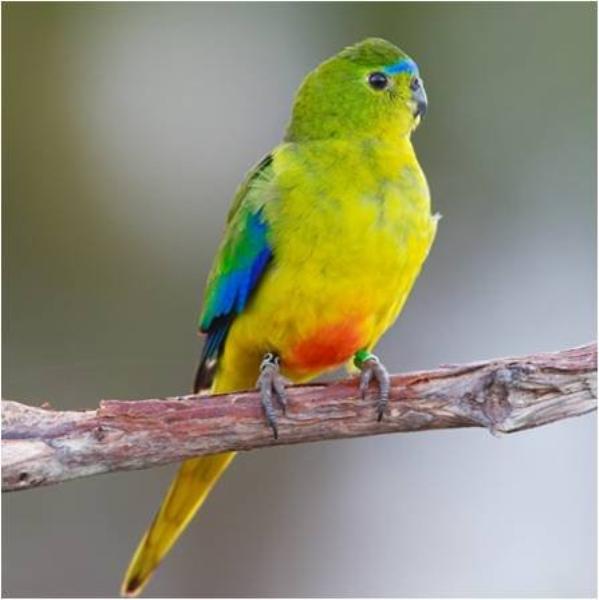By NOEL MURPHY
MOOLAP’S $4 billion Nelson Cove project has been dealt a curve ball with news the orange-bellied parrot is facing extinction from an outbreak of beak and feather disease.
The former saltworks site is considered crucial habitat to the endangered bird, now down to 50 in the wild. Federal Government has demanded an urgent response to the latest threat, which has killed many of this year’s fledglings.
The orange-bellied parrot has been a political issue several times in the past when its presence conflicted with developments including a petrochemical complex proposed for Point Lillias, a $220 million wind farm at Bald Hills in south-east Victoria and a Mornington Peninsula marina. The bird, which migrates annually between Tasmania and Victoria, has also been regularly involved in Tasmanian forest issues and was used against a now-failed $2 billion wind farm development on King Island.
Ridley Corporation’s Nelson Cove, proposing 4000 dwellings, would create thousands of jobs.
But Geelong Field Naturalists Club has cautioned against the development and Environment Minister and Bellarine MP Lisa Neville has called for a land-use study of the area.
Threatened Species Commissioner Gregory Andrews was unsure whether the disease was a problem yet for parrots in the Geelong area.
“It is too early to say whether the local populations in the Geelong region have been affected,” he told the Independent.
“Experts will be reviewing and assessing this next week. Adult birds are much less vulnerable to the disease than nestlings, so birds that have successfully migrated to the mainland are likely to be okay.”
Mr Andrews said the Government had put more than $5 million toward protecting the bird since 2006, including funding for habitat restoration in Victoria.
Monitoring of a Tasmanian breeding site earlier this year found that 19 of 26 chicks tested positive for the disease, which is common among other species such as sulphur-crested cockatoos and rainbow lorikeets.
Federal Environment Minister Greg Hunt has demanded an urgent response to the bird’s disease crisis and the Mr Andrew has called for scientists with differing views to collaborate on the threat.
Mr Andrews said he had contacted the Tasmanian Government, Birdlife Australia, NESP Threatened Species Recovery Hub, Orange-bellied Parrot Recovery Team and the CSIRO ahead of an emergency meeting at Melbourne Zoo next week.
“CSIRO has advised that it has capabilities that could build in resistance to the virus that causes beak and feather disease. This is a DNA virus and there are several approaches that could be evaluated to assess resistance.”
Ridley spokesman Stephen Butler said the company had never found an orange-bellied parrot on the site despite “numerous surveys” over “a number of years”.
“We’re aware that surveys regularly undertaken by the Geelong Field Naturalist Club in the past have also failed to record the species at the site.“
Mr Butler said Ridley had proposed a 450-hectare state-owned-and-controlled bird conservation reserve on a former saltworks site at Lara, which would provide “ideal habitat for migratory birds including the orange bellied parrot“.
Ridley still had “no details” of the government study, he said.
“But we’re keen to be briefed as soon as possible, as timing is critical for our investors to keep the Nelson Cove project moving forward.“







